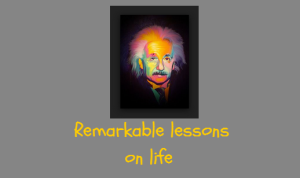The secret to increasing influence? Probably more than one. But one good one to consider? Use analogies to improve marketing influence. In your stories. In demonstrations.
Lots of ways to use analogies.
Marketers tend to like big, bold actions that grab attention and spew off metrics and the March on Washington would definitely qualify as that. Yet, all too often, we ignore the more mundane work that comes before. To market a product or an idea, you have to change minds and that’s the real lesson of the Civil Rights Movement. Marketers need to learn from it.
Here is a good story to illustrate. In 1865, Gregor Mendel published the paper that established him as the father of genetics. However, it went largely unnoticed until it was rediscovered decades later and became widely recognized as one of the great discoveries in the history of science. Why do some ideas quickly spread far and wide while others go nowhere at all?
More tips: Visual Content … 13 Remarkable Marketing Examples to Study
Here is a great story that we’ll share to illustrate our point:
A philosophy professor stood before his class with some items on the table in front of him. When the class began, without any words he picked up a very large and empty mayonnaise jar. He then proceeded to fill it with small rocks, about 2 inches in diameter.
He then asked the class if the jar was full. They agreed that it was indeed full.
The Professor then picked up a box of small pebbles and poured them into the jar. He shook the jar lightly. The pebbles, of course, rolled into the open areas between the rocks.
He then again asked the class if the jar was full. They nodded in agreement.
The professor picked up a box of sand and poured it into the jar. The sand, of course, filled up all the remaining space in the jar.
He then asked once more if the jar was full. The students responded with a unanimous “yes”.
“Now”, said the professor, “I want you to assume that this jar represents your life. The rocks are the important things – your family, your wife and marriage, your children, and your health – things that if everything else was lost and only they remained, your life would still be full. He could use analogies, yes?
The pebbles are the other things that have priority in your life – like your job, your house, your car.
The sand is everything else. The small stuff. Your lowest priority.”

“If you put the sand into the jar first,” he continued, “there is no room for the pebbles or the rocks. The same can be said for your life.
If you spend all your time and energy on your lowest priorities, the small stuff, you will never have room for the things that are most important to you.
Pay attention to the things that are critical to your happiness. Play with your children. Now while you can take your wife out to dinner and a movie.
There will always be time to go to work, clean and maintain the house, entertain your friends, and enjoy your hobbies.
Take care of the rocks first, your life’s foundation. The things that really matter. Set your top priorities and stick to them. The rest is just sand.
Was this an analogy that could influence you?
Making the simple complicated is commonplace; making the complicated simple, awesomely simple … well, that can influence!
So, what is your opinion of the use of analogies to increase influence? Does it ring true to you? Do you have experience in other ways to increase your influence to share with this community?
The bottom line
Leonardo Da Vinci’s life as a creative thinker provides inspiration and lessons to learn for individuals and companies working in the creative sector.
The lessons above have a direct relationship with the design and innovation process inside companies. Also, they are linked with different creative thinking and problem-solving tools and methods which can be implemented to connect between different patterns to reach creative ideas and solutions. Do you see?
Very, very few of Da Vinci’s abilities are in the populace. But that doesn’t mean you can’t learn to be creative … it can be learned. Can you use these lessons to learn to see or see better? Give it a try. Practice and be persistent. Stick with it, and over the long haul, you will see some good dividends.
What will have to change is the marketing mindset. The fundamental questions in the coming years will not be how to deploy this or that new technology, but how to can solve fundamental marketing problems, such as how to earn consumers’ trust and how to create experiences that are more impactful, useful, productive, and beneficial.

